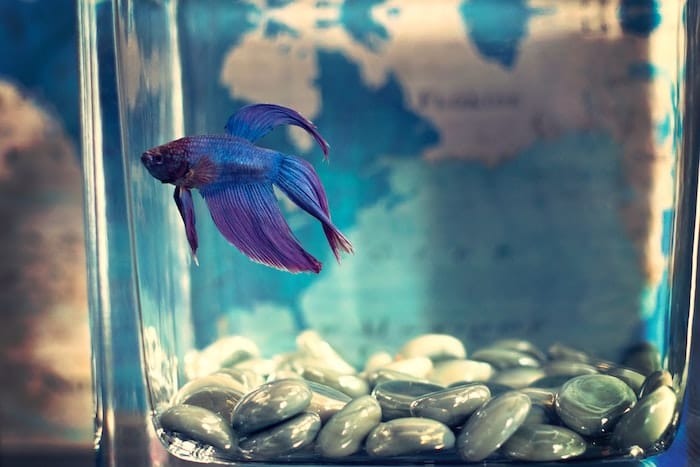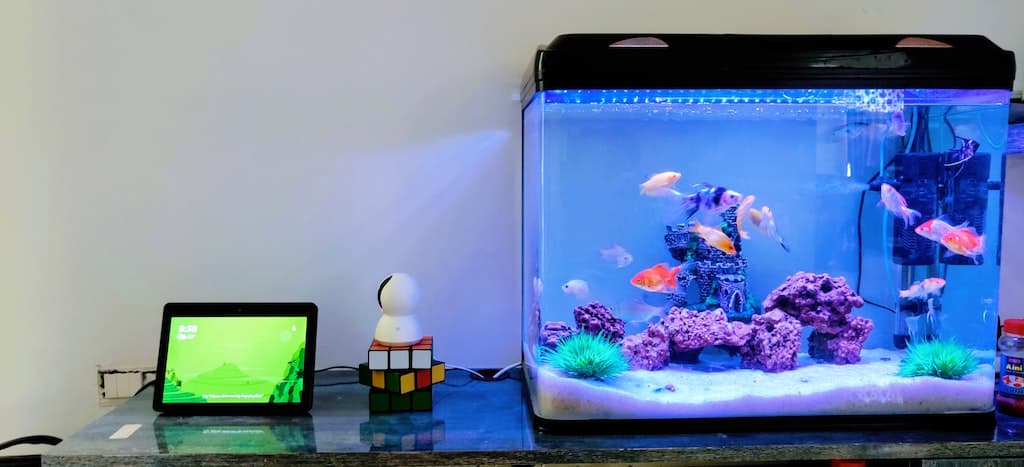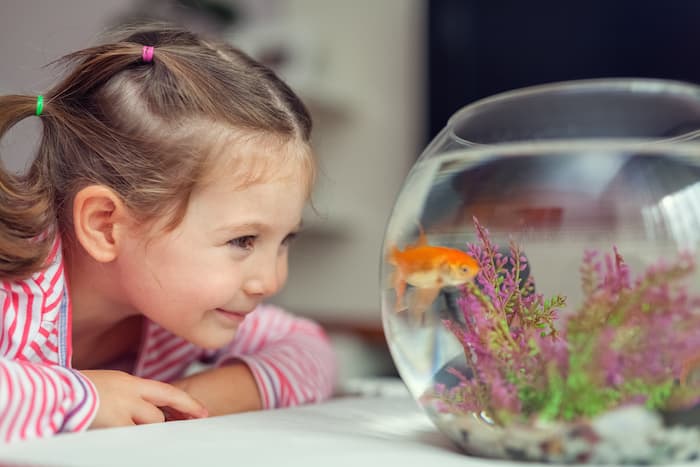If you’re a beginner in the world of fishkeeping you might think a smaller aquarium with one or two fish is easier to maintain than a large tank.
But in reality, maintaining a small aquarium can be more challenging. Your fish produce toxic waste, mainly in the form of ammonia, which can build up quickly in the small volume of water and if not dealt with can lead to the death of your fish.
You can manage and control ammonia and other water parameters with equipment such as the right filter. But you can also perform the right maintenance activities to ensure your small tank stays in perfect condition for your fish.
Let’s take a look at 5 tips you can use to maintain a small aquarium and keep your fish healthy and happy.
1. Test Your Water Parameters Frequently
As well as ammonia, there are other water parameters in your small aquarium that need to be kept at the correct levels to provide a safe environment for your fish.
Two of these, nitrite and nitrate, are produced when beneficial bacteria in your tank break down toxic ammonia produced by your fish. These bacteria mainly live within your filter’s biological media, and this process is known as the nitrogen cycle.
You can use a water test kit to check the levels of these parameters. In a small aquarium, nitrite should be kept under 0.2 ppm, with nitrites under 50 ppm. Ammonia should be as close to 0 as possible, and no more than 0.1 ppm.
Test your water parameters at least weekly, if not every few days. A good test kit will also allow you to check pH and KH (carbonate hardness) as part of the same test.
2. Perform Regular Water Changes
As well as beneficial bacteria keeping these water parameters in check, you should also do regular water changes. This is particularly important in a small aquarium to stop toxins quickly building up to dangerous levels.
Some experts recommend changing a smaller percentage of water weekly, whereas others prefer a larger change every two weeks. But in most cases, for a small aquarium, you’ll want to replace about 20% of your water on a weekly basis.
When you perform your water change, remember to use a de-chlorinator to remove chlorine and other chemicals from fresh tap water before adding it to your tank. These chemicals are highly toxic to your fish which is why tap water must be conditioned before use.
The main thing when it comes to water change frequency is to keep testing your water parameters. If you find nitrates and other parameters remain stable week on week you may be able to drop the frequency slightly.
3. Don’t Overfeed Your Fish
Overfeeding your fish can cause a variety of health issues, from swim bladder problems to bloating, and constipation.
It can also cause a variety of other problems in a small aquarium. Any food that is not eaten will start to break down forming more toxic ammonia. Not only is this dangerous for your fish, but you can also get problems with algal growth due to the excess nutrients.
For this reason, stick to a feeding schedule, usually once a day for a small aquarium. And be careful only to feed your fish the amount they can eat in two or three minutes.
Think about the type of food you feed your fish too. Small catfish, like otocinclus, are bottom dwellers, and pellets that sink are more appropriate for them. Guppies, on the other hand, feed at the surface so fish flakes that float are the better choice.
4. Keep A Careful Eye On Temperature
Temperature is a key water parameter to get right in a small aquarium. The lower volume of water has a smaller thermal capacity, meaning while it takes less heat to warm the water it will also cool quicker than a large tank. So maintaining a consistent temperature is key.
There are some aquatic animals suitable for nano aquariums, such as cherry shrimp, that will do well at around room temperature. However, if you want to keep tropical fish you’ll need a heater to get your water to the 74 to 80°F preferred by most freshwater species.
It’s also important to position your tank out of direct sunlight. As well as causing excess algal growth, sunlight can dramatically change the temperature in your small tank. And as it’s a small volume of water it can overheat in a very short period.
5. Avoid Overstocking Your Tank
It’s particularly important not to overstock a small fish tank. Overstocking can lead to increased territorial behavior, as well as causing excess waste in your water from too many fish being kept.
In general, for a small freshwater aquarium, you should allow one gallon for each inch of fish. So you could keep five 1-inch long neon tetra in a 5-gallon tank, for example.
If you choose to keep other aquatic animals, like shrimp, you can stock these more densely. Cherry shrimp grow to about 0.8 inches, and you can keep between five and ten in a small 3-gallon fish tank.
The Bottom Line
Maintaining an aquarium is often about what you can’t see rather than what you can. Water parameters that are invisible to the naked eye, such as ammonia and nitrite, are critical to be kept at safe levels so as not to harm your fish.
This is especially important in a nano aquarium where the smaller volume of water means these toxins can build up much more quickly. In the same way, the temperature has to be carefully maintained in a small tank as it can be prone to fluctuations.
But by following the simple tips above you can make sure they are covered along with other appropriate maintenance activities. This will ensure your small aquarium provides the right environment for your fish to help them to thrive.
Related Reading



